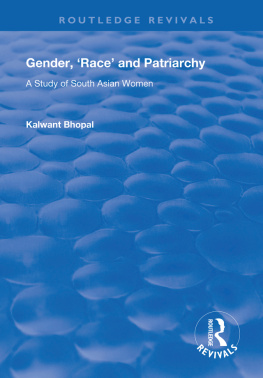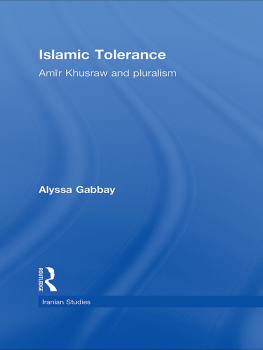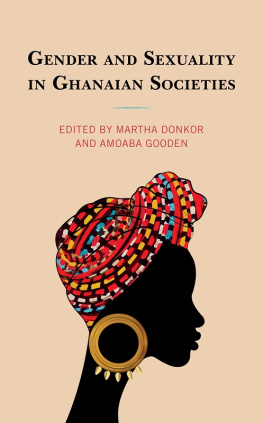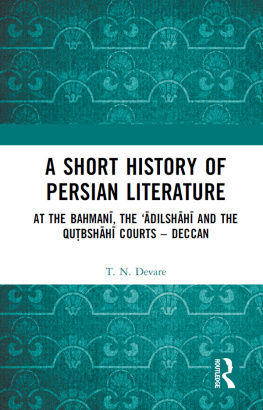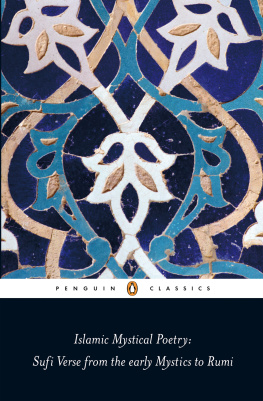Mah Laqa Bai portrait, oil painting from mid-nineteenth century, housed at the Archaeology Museum in Public Gardens, Hyderabad
Pavilion housing the tomb of Mah Laqa Bai and her mother, Raj Kanvar Bai, located at the foot of Mawla Ali Hill, outside Hyderabad
Prime Minister Aristu Jah and the second nizam, miniature painting housed at the Archaeology Museum in Public Gardens, Hyderabad
Acknowledgments
Researching and writing this book has been a labor of love and an excellent adventure. It kept me flitting from America to India for many years, with crucial stops in London and Pakistan. I am grateful to many people and institutions that supported me along the way.
While completing this book, I was generously funded by the Mellon Foundation New Directions Grant. The Fulbright Foundation financed initial research on Sufi and Shii pilgrimage sites in Hyderabad. Specialized research on Mah Laqa Bai was funded by the American Institute of Indian Studies. The U.S. Ambassadors Fund for Cultural Preservation funded a project to restore Mah Laqa Bais built heritage; I was privileged to serve as director and am grateful to Juliet Wurr (public diplomacy officer at the U.S. Consulate in Hyderabad) and her assistant, Salil Kader, who supported the project despite all obstacles. My associates on the project, including Oudesh Rani Bawa (my Urdu teacher), Vasant Kumar Bawa (founder of the Center for Deccan Studies), Sajjad Shahid (heritage activist), and G. Shashidhar Reddy (architectural and graphic designer), were wonderful partners.
Colleagues at Emory University invited me to give talks on Shah Siraj and Mah Laqa Bai, and supporters from my Department of Middle Eastern and South Asian Studies include Roxani Margariti, Vincent Cornell, Rkia Elaroui Cornell, Elliot McCarter, Ruby Lal, and Velcheru Narayana Rao, while Juana Clem McGhee diligently looked after the details. In the field of performance studies, Pallabi Chakravorty and Joyce Flueckiger helped with delightful discussion and probing questions. I am also thankful for the keen eye of Stephanie Yep, an intrepid doctoral student, who helped edit the manuscript.
Oudesh Rani Bawa deserves special thanks for reading Mah Laqa Bais poems with me; she tirelessly helped explain their linguistic and cultural nuances as the power went out and the monsoon rains darkened the skies. The people of Hyderabadscholars, poetry lovers, musicians, and journalistsencouraged me, argued with me, and delighted me in discussions; they all deserve my heartfelt thanks, especially Siraj Kamal Sohrab Alam (heritage collector), Jayanthi Rajagopalan (cultural tourism entrepreneur), Mohammed Suleman Siddiqi (professor of Islamic studies), and Mohammad Aslam Khan and his late father, Saeed ur-Rahman Khan (both musicians of Sarangi).
Research for this book was conducted in archives whose caretakers deserve praise for helping me access rare manuscripts. At the National Museum in Delhi, my research was facilitated by Dr. Tripati and the staff in charge of Islamic manuscripts. At the Andhra Pradesh State Oriental Manuscript Library, I was aided by the director and two archivists, Drs. Rafath Rizwana and Fathima Tanweer. At the Salar Jung Museums library, I was helped by the director, Dr. A. N. Reddy, and his assistant, Veerender Mallam, along with the library staff. (But those in charge of the Idara-e Adabiyat-e Urdu should be spanked for having lost an irreplaceable handwritten divan of Mah Laqa Bai!)
Many institutions have invited me to speak about the topics in this book, and those were critical moments to share and receive feedback. In addition to Emory University, I thank Western Michigan University, Cornell University, the Nehru Center in London, and the Dance Matters Conference at Jadhavpur University in Kolkata.
Sufi communities in the Deccan supported me in countless ways. In Hyderabad, I am deeply grateful to members of the Khanqah-e Kaleemi and to its late leader Syed Mohammed Rasheed-ul-Hasan Jeeli-ul-Kaleemi (may God grant him compassion), his family, and his followers. I thank Syed Moinuddin Mohammad Mian, the kind custodian at the dargah of Nizam al-Din Awrangabadi, along with his family and his supporters.
This book is the fruit of residing in Hyderabad. There I found a second home because of the welcoming embrace of Rudra Kishore Mandal, Syed Ali Arif, Aditya Kini, and Sonam Gyamsto. The love of such friends illumines the city more than Divali lamps or Muharram torches. I would have never arrived in Hyderabad if not for Seemi Bushra Ghazi, Zia Inayat Khan, and Omid Safi, with whom I first explored ghazalsmay the light in your hearts never fade!
Translation and Transliteration from Urdu and Persian
All texts and poems in the book are original translations by the author unless otherwise noted. This book refers to terms in Urdu and Persian, which are defined in context the first time they are used. The transliteration system is adapted from the


